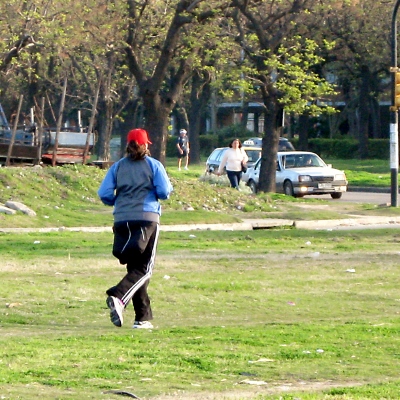 Every runner has his or her fair share of ache and pains. One of the most common localized areas of pain is the shin, which seems to be one of the most elusive areas of injury. Â Most people refer to pain in the shin as a “shin splint.” Is that right? There is currently no real consensus among sports scientists for what injury qualifies as a shin splint. Ultimately, “shin splints” is now used as an umbrella term for shin-related pain. If you’re feeling pain in your shins, you can feel free to diagnose yourself as having shin splints. However, knowing the true nature of the injury is extremely important for determining a treatment plan.
Every runner has his or her fair share of ache and pains. One of the most common localized areas of pain is the shin, which seems to be one of the most elusive areas of injury. Â Most people refer to pain in the shin as a “shin splint.” Is that right? There is currently no real consensus among sports scientists for what injury qualifies as a shin splint. Ultimately, “shin splints” is now used as an umbrella term for shin-related pain. If you’re feeling pain in your shins, you can feel free to diagnose yourself as having shin splints. However, knowing the true nature of the injury is extremely important for determining a treatment plan.
If you have long-term shin pain, there are two main types: muscle-related and bone-related. Muscle-related shin splints are less common and is felt as a tightening of the muscles that occurs when exercising (and might completely disappear a few minutes after exercised is paused). If you experience this type of pain it may be a sign of exertional compartment syndrome. Compartment syndrome is diagnosed with special pressure measurements in the muscle, and can sometimes require surgery to decompress the muscles. However, shin pain can also be bone-related.
Bone-related shin issues generally cause pain upon landing each step. It may ache for some time after exercising or in more severe cases as you lie in bed at night or walk around the next day. There are actually a few at-home tests that you can perform to see if you have signs of bone-related shin pain that might warrant a trip to the doctor. The first is a simple jump test: hop on one foot. If this causes significant pain in the shin, a trip to the doctor would be the wisest decision – it may be a sign of a stress fracture. Another test is to massage along your shin. If you have significant point tenderness (it feels like a specific area is bruised though there is no apparent bruise), it is another potential reason to schedule an appointment with your doctor.
Luckily, not all shin pains require a break from running. A stepping stone to a full-blown stress fracture is the lesser-known medial tibial stress syndrome (MTSS), which is recognized as soreness along the lower 2/3 of the tibia. Did you recently switch shoes or ramp up your mileage? Is it nearing the end of a strenuous season? This is likely to be the source of your pain. See if backing off on mileage and lower leg muscle stretching and strengthening seem to help over time. If it does, approach a return to full mileage gradually.
Regardless of the exact type, shin pain is generally an over-use injury and cannot be solved by “running through” the injury. Whether compartment syndrome, a stress fracture, or MTSS, ignoring the injury will cause increase discomfort over time and will likely correspond with larger consequences: more pain and a longer recovery time.
Stay tuned for tips on preventing shin splints!





